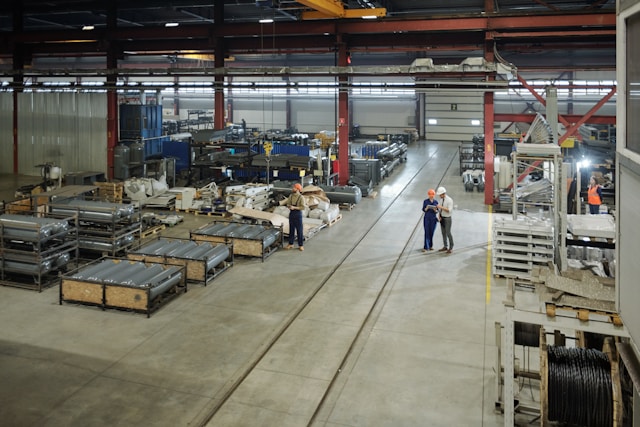Real-time monitoring in an enterprise system is modernizing the manufacturing industry by enhancing efficiency and resilience throughout the design-to-manufacturing lifecycle. With increasing pressure to reduce production costs, accelerate time-to-market, and maintain high product quality, manufacturers are adopting real-time monitoring to gain actionable insights from the massive amounts of data generated daily.
Enhancing Efficiency and Reliability
According to a whitepaper from Dassault Systems’ DelmiaWorks ERP, by providing continuous feedback on machinery performance, real-time monitoring allows manufacturers to optimize their operations. Machines with improved reliability enable short-notice production runs, making companies more adaptable to changing market conditions. Real-time monitoring integrates seamlessly across various stages—from CAD designs in SOLIDWORKS to Bill of Materials (BOM) pricing, production scheduling, quality assurance, and delivery. This synchronization saves time and reduces errors, enhancing overall productivity.
Key Benefits of Real-Time Monitoring
The whitepaper highlights some of the key benefits of real-time monitoring. They include:
- Establishing performance benchmarks by creating baseline performance data for machinery. This enables continuous improvements and help identify inefficiencies, allowing teams to fine-tune operations.
- Fostering collaboration among design, engineering, quality management, and production teams. By sharing a unified data model, these teams can make informed decisions, reduce errors, and enhance product quality and profitability.
- Detailed machine performance data supports proactive maintenance, extending machinery lifespan and ensuring compliance with calibration standards. For example, identifying machines with high wear rates enables targeted upgrades, reducing downtime and improving reliability.
- Real-time feedback, which shortens the prototyping process, enabling rapid adjustments to designs. Digitally testing product durability and quality before full-scale production saves time and resources, allowing manufacturers to meet customer demands faster.
- Adopting real-time monitoring aligns machinery with agile design-to-manufacturing processes. Teams can respond quickly to production challenges, reduce costs, and maintain high quality. By integrating diverse systems and creating fitness plans, manufacturers ensure greater synchronization and scalability.
In conclusion, real-time monitoring is the cornerstone of modern manufacturing, enabling companies to innovate faster, improve efficiency, and deliver higher-quality products while staying resilient in a competitive landscape.
What this means for ERP Insiders
There’s a fundamental shift in how manufacturers utilize data. Advanced analytics techniques, such as predictive modeling and machine learning, can help organizations extract deeper insights from real-time data and uncover hidden patterns. By embracing a data-driven approach, manufacturers unlock significant improvements in efficiency, quality, and time-to-market, enabling them to thrive in today’s competitive and rapidly evolving market. They are also developing a data-driven culture within the organization.
Utilizing real-time monitoring improves business efficiency. Integrating manufacturing execution systems (MES) with real-time monitoring allows teams to track and optimize machinery performance in real-time, ensuring better coordination and on-time delivery. DelmiaWorks cites a recent survey that found 81% of manufacturers experienced business improvements through real-time monitoring, with even higher adoption rates in process-intensive industries.
Evaluate the technology that works best for you. While real-time monitoring has a distinct set of benefits as described in the DelmiaWorks whitepaper, manufacturers must evaluate the technology that works best for them before investing in upgrades. Some essential criteria include system integration capabilities; data accuracy and granularity of metrics like cycle times, machine utilization, scrap rates, and yield rates; the scalability and flexibility of the solution; machine health monitoring features such as Mean Time Between Failures (MTBF) and Mean Time to Repair (MTTR); and return on investment by analyzing the total cost of ownership.





